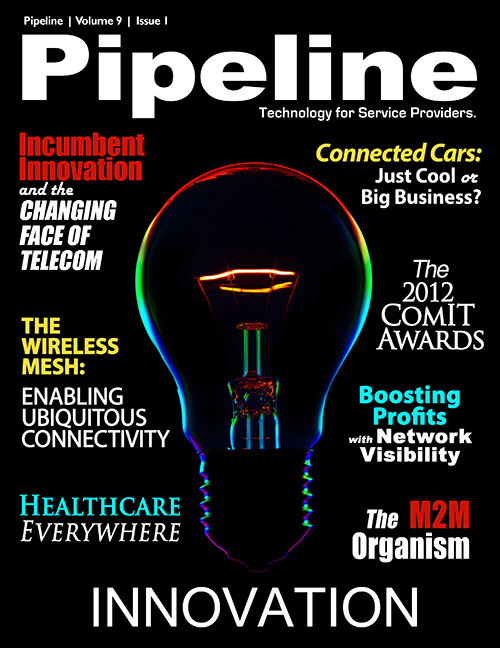Enabling the Mesh of Pervasive Connectivity
It's a Bird, It's a Plane—No, It's a Satellite
Small cells, multi-mode macro cells, and next-gen Wi-Fi hotspots are impressive, but there's one problem: their signals cannot always reach us at sea or in the air. In order for the connectivity mesh to extend to these often-traveled areas, satellite technology must be employed. Luckily, like most other technologies, satellite telecommunication has dramatically improved over the past decade. Costs have fallen and capabilities have risen due to miniaturization, reduced power consumption, near-earth-orbit arrays, advanced interference management, and Ka band spectrum. Today, satellite isn't just providing maritime phone service; it's adding capacity and coverage for global CSPs.
Intelsat CEO Dave McGlade commented on the significance of the launch of a new satellite at the end of March, “...its customized beams will further progress our global mobility broadband fabric, allowing always-on broadband for ships and planes traversing the world’s busiest transport routes,” McGlade said in a statement. “Intelsat delivers broadband infrastructure everywhere, and the successful launch of Intelsat 22 delivers enhanced satellite capacity for telecommunications leaders in Asia, the Middle East, Africa and Europe, such as the UAE’s Etisalat and Ethio Telecom of Ethiopia.”
The Gateway and Policy Controller
So now that we have multiple access technologies and hardware elements, how do we connect them functionally as a wholly unified entity?
“It's all about how we stick these varying access technologies together, seamlessly--right now it's a little clumsy,” said Ian Miller, director of new access network, Telefonica, at Mobile World Congress.
The challenge isn't so much connecting different transports as it is seamless managing their interoperability, authentication, and enforcing policy as users bounce between different components in the network. In fact, none of the possibilities we've outlined are possible without this critical piece of software. It must function at light speed, offer unprecedented scale and elasticity, and be both vendor and platform agnostic. In fact, it could be argued that the sudden rise in policy controllers is a result of the evolution of the connectivity mesh.
In order to spread the traffic load evenly, ensure QoS, the gateway and controller must select between the “best” access node dynamically, and in real-time. It must provide single log-on authentication, and ensure that user policies are maintained no matter whether the session is delivered over 3G, 4G, Wi-Fi, or satellite. What's more, the “best” access node is highly dependent on a number of network and user scenarios.
“It makes no sense offloading to an almost congested Wi-Fi node,” noted Johan Terve. The best policy control and rules function server can send policies to another ANDSF node, which in turn can set policies; that is the next step in offloading,” he said.
Different Words, Same Mesh
Network equipment manufacturers and CSPs use different terms to describe the mesh of connectivity that is evolving today. Huawei calls it Network Synergy; Verizon and Sprint call it the Het Net, or Heterogeneous Network. Whichever term is used, they all define the method by which carriers deliver ubiquitous connectivity.



















